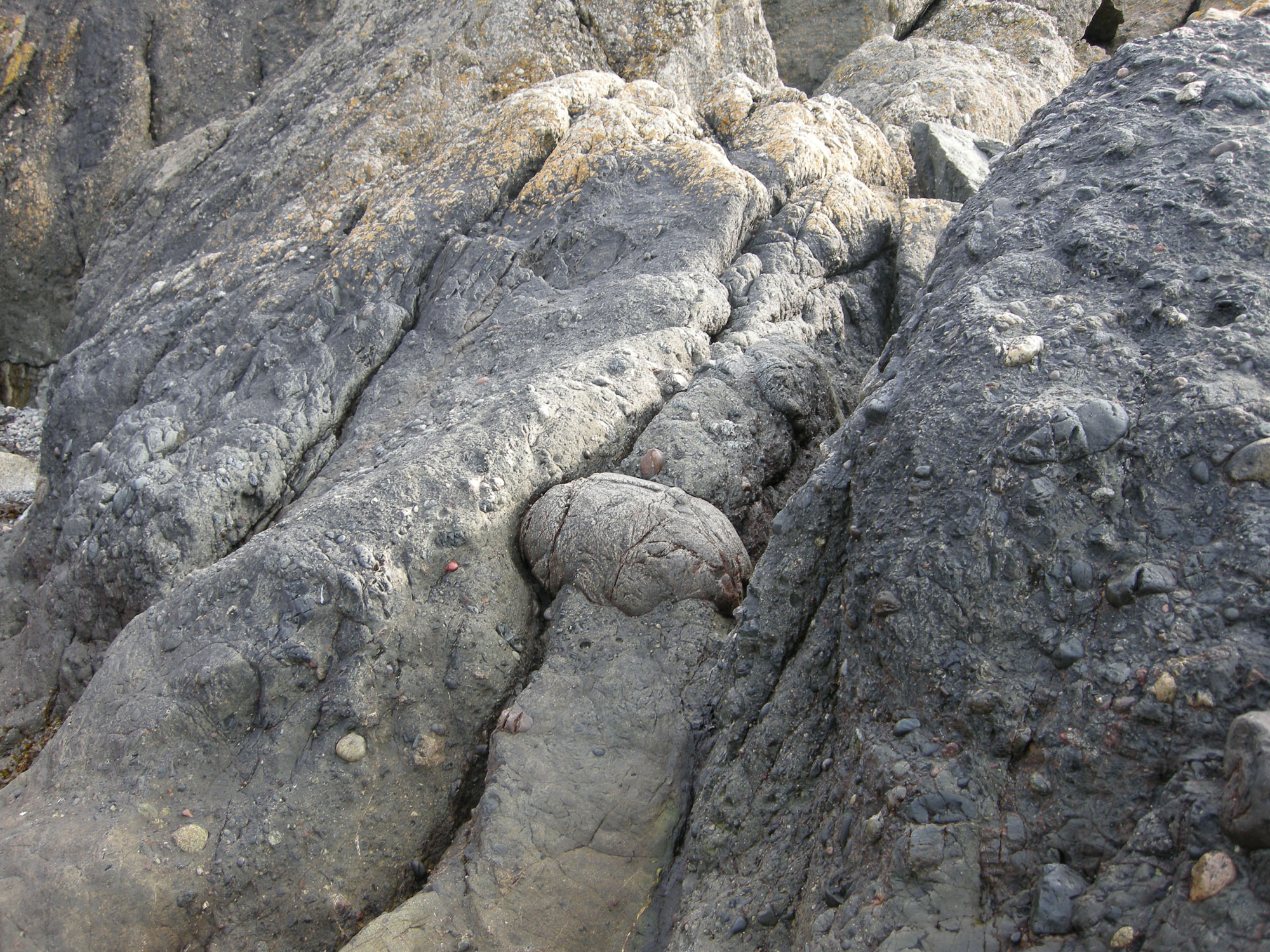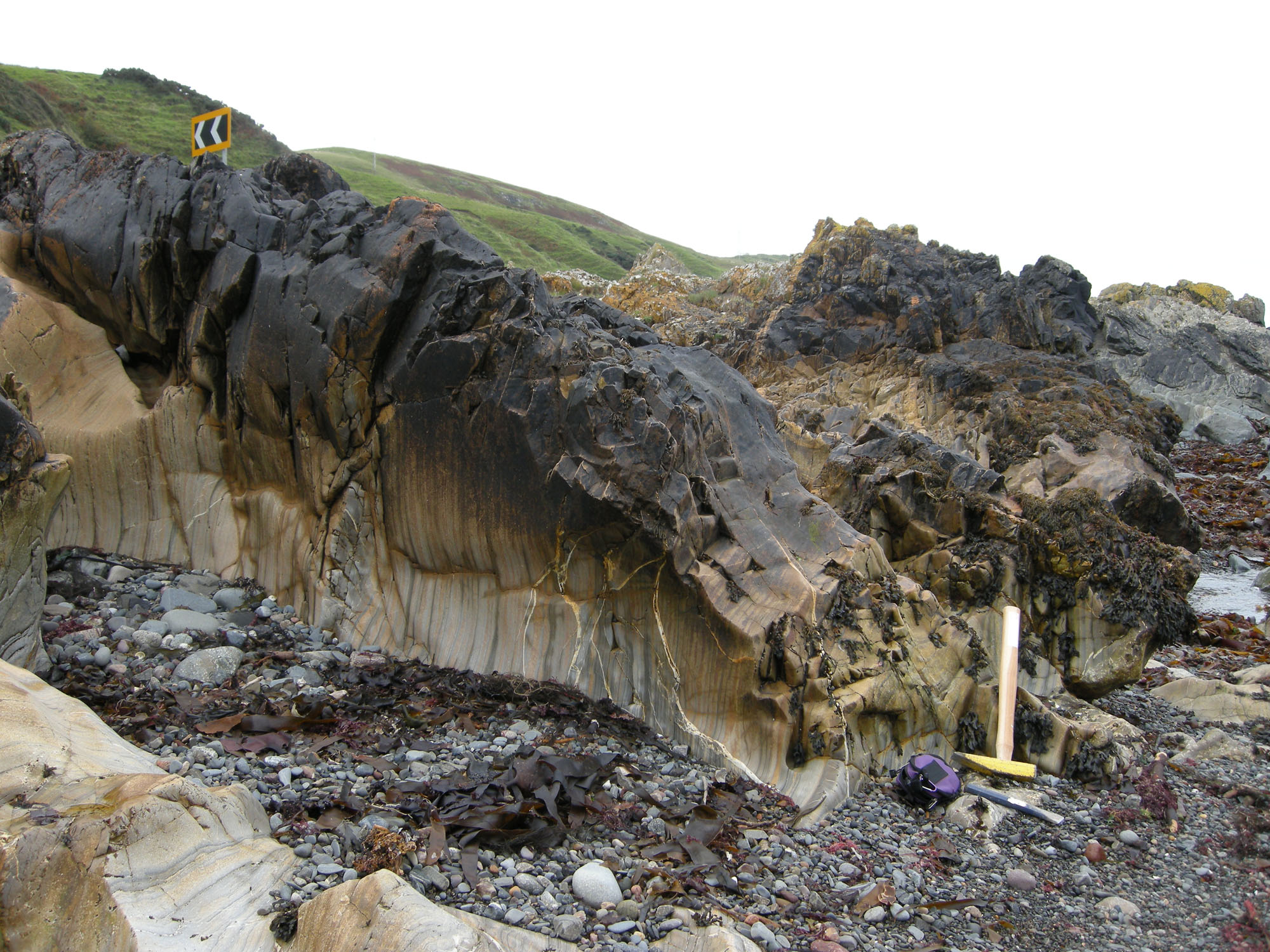At Kennedy’s Pass, there is a formation that is full of conglomerate units, mudstones, siltstones and sandstones. Within this, you can find a wide range of fossils, including trilobites, graptolites, corals and brachiopods. However, they are not easy to find. The productive beds are lower down, which are mostly covered up by the less productive upper beds.
DIRECTIONS
♦ From Girvan, head south along the A77. This is a busy road and you will go through some average speed cameras.
♦ Pass the small hamlet of Ardwell. The road will then continue fairly straight for just under 2km and then turns slightly west following the coastline.
♦ Just round this bend is Kennedy’s Pass, which is also marked on OS 1:25,000 maps. There is a lay-by on the opposite side of the road nearby. You can cross here (be careful, as this is a busy road) and you will see a small cliff, which you can descend.
♦ Ref: 55.19768°N, 4.91166°W
PROFILE INFO
FIND FREQUENCY: ♦♦ – There are many excellent fossils to be found at this location. The problem is that the productive beds are mostly covered up. The top beds contain too many pebbles and cobbles, with fossils being quite rare. However, if you have time, it is still worth the trip to try your luck searching and splitting the rocks.
CHILDREN: ♦♦ – We would not recommend children at this site, as the rocks are large and slippery. In addition, you will probably come away with nothing. There are other sites nearby in the area that children can visit without any difficulty.
ACCESS: ♦♦♦♦ – Park in a lay-by beside the road and then drop down to the beach to start collecting from the bottom of the small cliff. Note that this road has average speed cameras.
TYPE: – Most of the time, the only exposures are a small cliff, which you can easily climb down from the road. The rocks here can contain fossils, but the best more productive rocks are below beach level. During scouring conditions, the foreshore will contain rocks with more of a mudstone consistency, which will give you a much better chance of finding fossils.
FOSSIL HUNTING
Once you descend the low cliff from the main road, you will immediately see conglomerate beds packed with small pebbles and larger boulders, intermixed with mudstone and siltstones. You need to climb to the lowest beds at the bottom, although this is not easy, as these beds are often covered up. Nevertheless, the top beds still contain fossils – it is just much harder to find them.
The rocks here are from the Balclatchie Formation, and can contain brachiopods, trilobites, corals, ostracods, graptolites and conodonts. Unfortunately, these are the same colour as the rocks, but are often fairly well preserved. Since the best beds are found below beach level, the best time to collect from this location is during scouring conditions.

GEOLOGY
The Balclatchie Formation is part of the Ardmillan Group (Ardwell Subgroup), which is Ordovician in age (450myrs old) and can be up to 300m thick. Kennedy’s Pass contains the best exposures of this rock.
The beds consist of blue-grey nodular mudstones, siltstones, fine sandstones and conglomerates. The top beds consist of the Kilranny Conglomerate Member, which contains cobbles and boulders in a coarse, pebbly sandstone. The more consistent mudstone layers are found at the base, which are also more productive for fossils.
However, the most fossiliferous exposures are found at Craighead Quarry (refer to description of this site).


SAFETY
At high tide, the sea reaches the base of the cliff. However, collecting from the small cliff can be done at anytime, as long as you take care and keep away from the steep slopes. Some of the rocks can also be steep and slippery, and therefore dangerous. The main road is also very busy, so extra care should be taken.
EQUIPMENT
A heavy hammer, a splitting chisel and safety glasses are essential, as the rocks are extremely hard. Take plenty of wrapping paper and a container to put any finds in.
ACCESS RIGHTS
This site is an SSSI. This Special Site of Scientific Interest, means you can visit the site, but hammering the bedrock is not permitted.
 Scotland’s fossil resource is at risk of abuse and damage, and so we must all safeguard and managed fossil collecting to ensure its survival for future generations. For this reason it is VITAL you read and adhere to the Scottish Fossil Code for ALL sites in Scotland.
Scotland’s fossil resource is at risk of abuse and damage, and so we must all safeguard and managed fossil collecting to ensure its survival for future generations. For this reason it is VITAL you read and adhere to the Scottish Fossil Code for ALL sites in Scotland.
It is important to follow our ‘Code of Conduct’ when collecting fossils or visiting any site. Please also read our ‘Terms and Conditions‘
LINKS
♦ Buy Fossils, Crystals, Tools
♦ Location Discussions
♦ Deposits Magazine
♦ Join Fossil Hunts
♦ UK Fossils Network






















